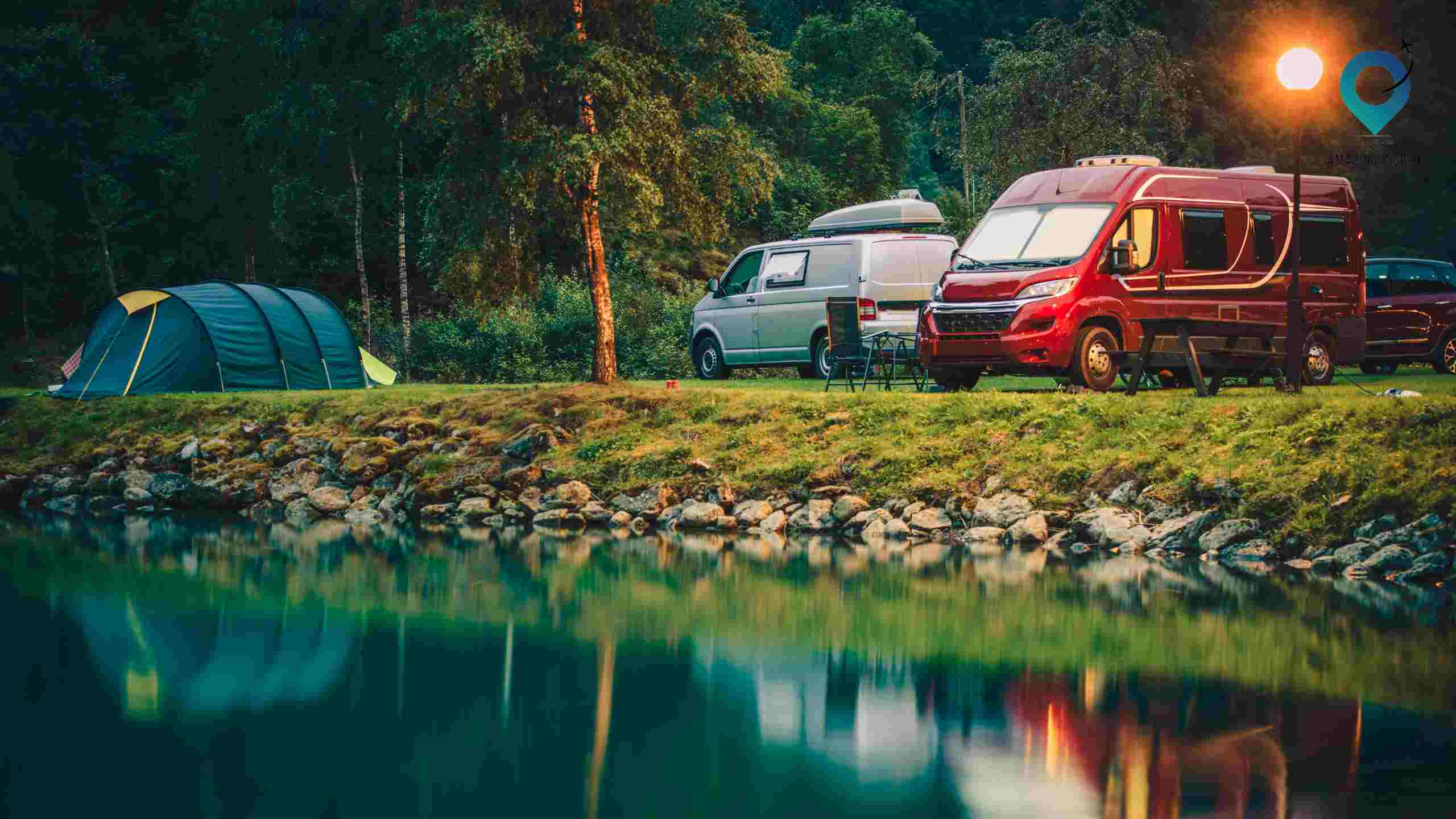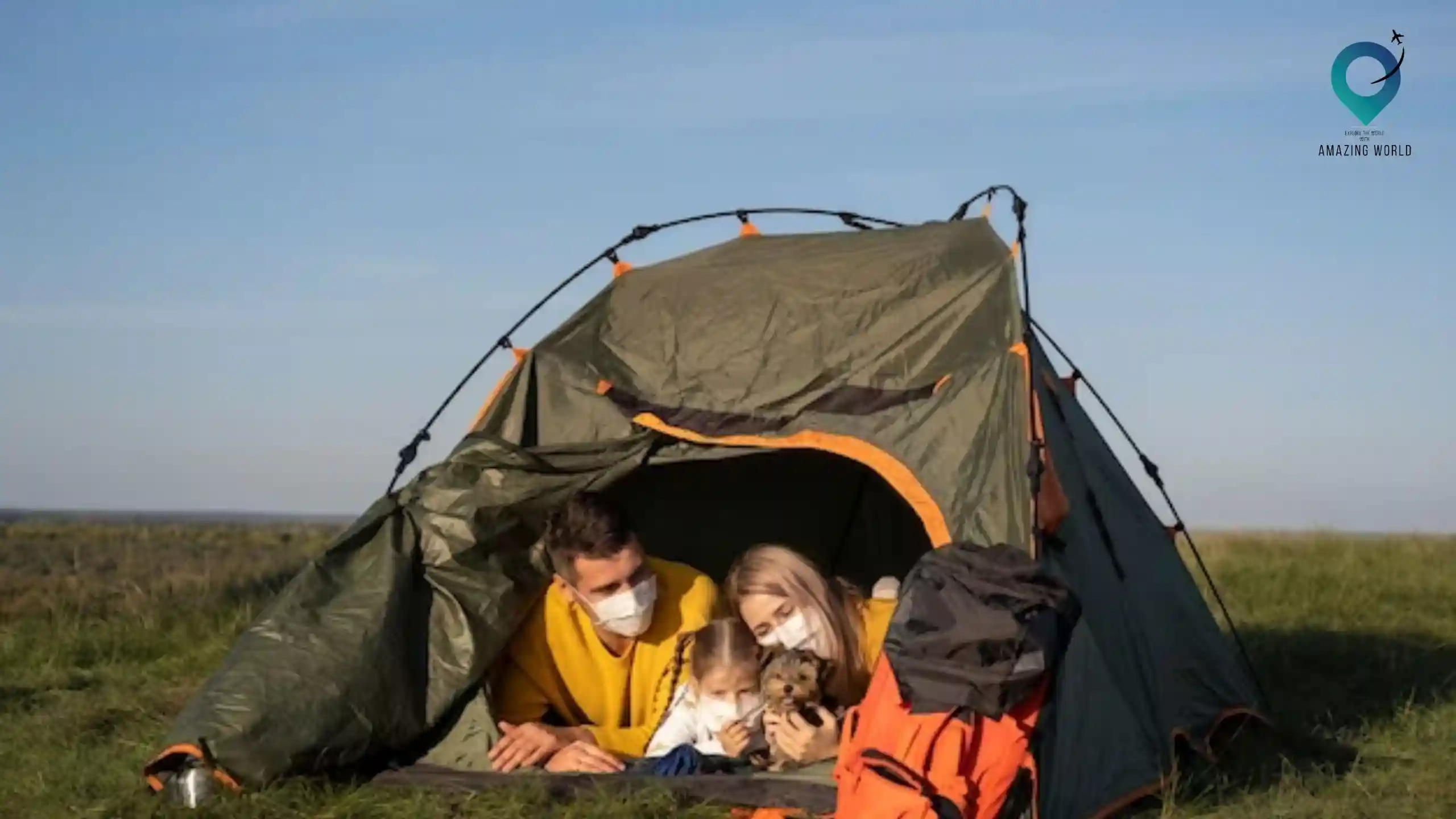Types of Camping Adventures: From Backpacking to Luxurious Glamping
Table of Contents
ToggleEmbarking on a journey into the wild is more than just an escape from the ordinary; it’s an embrace of the extraordinary. Welcome to a world where nature becomes both sanctuary and playground, where the stars are your ceiling and the rustling leaves your lullaby.
In this comprehensive guide, we invite you to explore the enchanting realms of camping adventures, where the spectrum of experiences spans from the rugged allure of backpacking to the opulent comforts of glamping. As we navigate through each camping style, from the minimalist tranquility of tent camping to the lavish indulgence of luxurious glamping, you’ll discover the magic of disconnecting from the daily grind and reconnecting with the awe-inspiring wonders of the great outdoors.
So, gear up, pitch your tent, or step into your cozy glamping haven as we embark on an odyssey through Types of Camping Adventures: From Backpacking to Luxurious Glamping.
List of The Different Types of Camping Styles
1. Backpacking Adventures
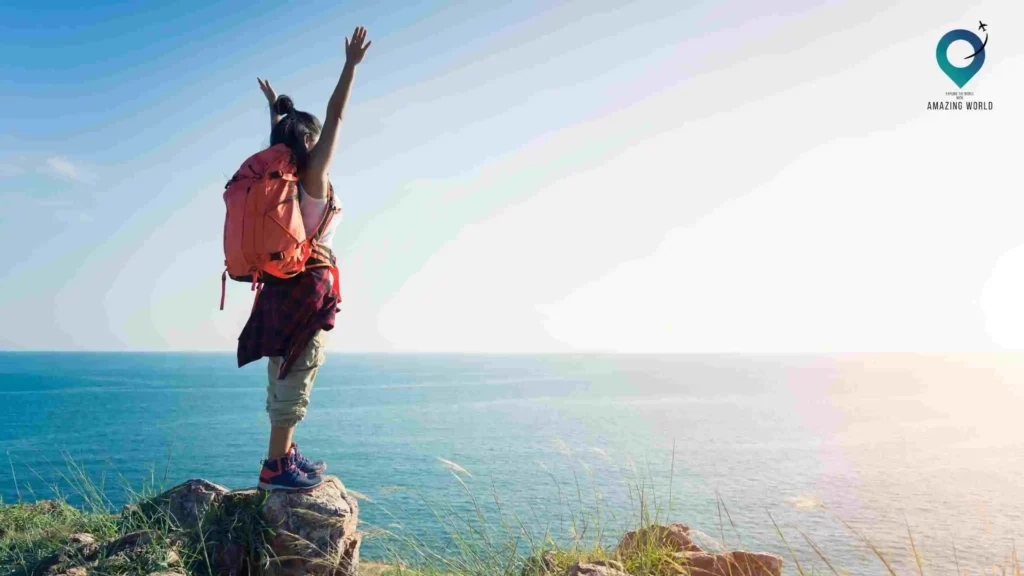
Backpacking camping is the epitome of venturing into the wilderness with little more than what you can carry on your back. It’s a truly immersive experience that takes campers away from the conveniences of modern life and places them in the heart of nature. Here’s a closer look at the world of backpacking adventures:
- Thrill of Exploration: Backpacking is all about exploration and self-sufficiency. Hiking through rugged terrains, crossing streams, and conquering challenging trails provide an unmatched sense of accomplishment.
- Packing Smart: To ensure a successful backpacking trip, pack only the essentials. Lightweight, compact gear is key, from ultralight tents and sleeping bags to portable stoves and dehydrated meals.
- Famous Trails: Iconic trails like the Appalachian Trail in the U.S. and the Camino de Santiago in Spain offer immersive backpacking experiences. These trails often span several weeks and challenge campers both physically and mentally.
2. Tent camping

Tent camping harks back to traditional camping experiences, where campers set up tents to shield themselves from the elements. It’s a classic way to immerse oneself in the outdoors:
- Various Tent Types: Dome tents, tunnel tents, and cabin tents are some common tent styles. Each offers different features such as space, ease of setup, and weather resistance.
- Setting Up Camp: Erecting a tent requires basic skills. Anchoring stakes, assembling poles, and securing rainflies are essential steps for a comfortable night’s sleep.
- Outdoor Cooking: Campers can enjoy the rustic pleasure of outdoor cooking, often using portable stoves or campfires. This adds to the overall camping experience.
3. RV Camping
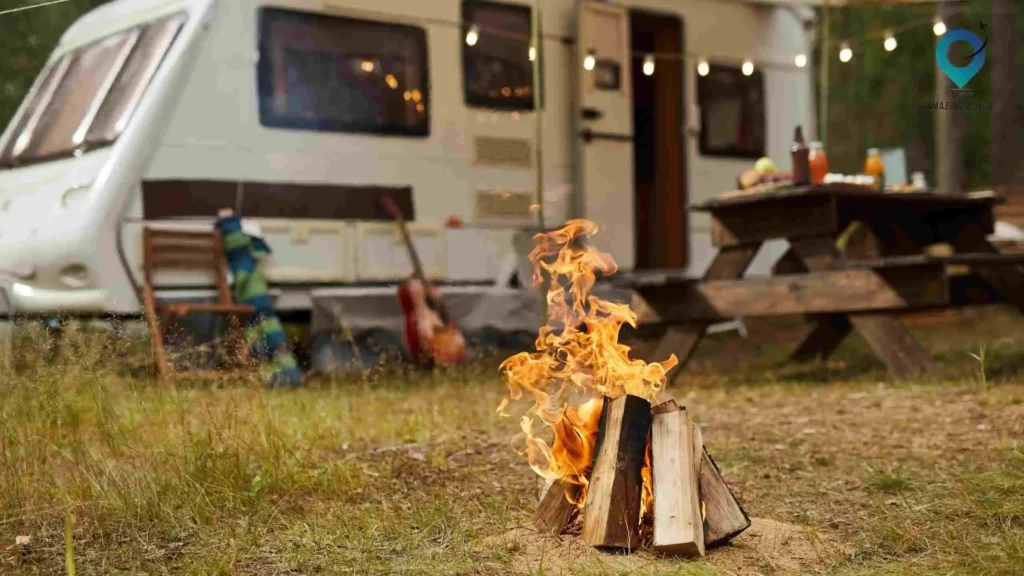
RV camping combines the allure of outdoor exploration with the comforts of home. It’s a perfect option for those who want to be close to nature without sacrificing modern conveniences:
- Mobile Accommodation: RVs come in various sizes and classes, from luxurious motorhomes to compact camper vans. They offer sleeping quarters, kitchens, and often bathrooms on wheels.
- Freedom and Flexibility: RV campers can choose their destinations and travel routes. This type of camping allows for spontaneous detours and extended stays.
- Campsite Options: RV campgrounds provide amenities like electricity, water hookups, and sewage disposal. Some even offer entertainment facilities and organized activities.
4. Car Camping
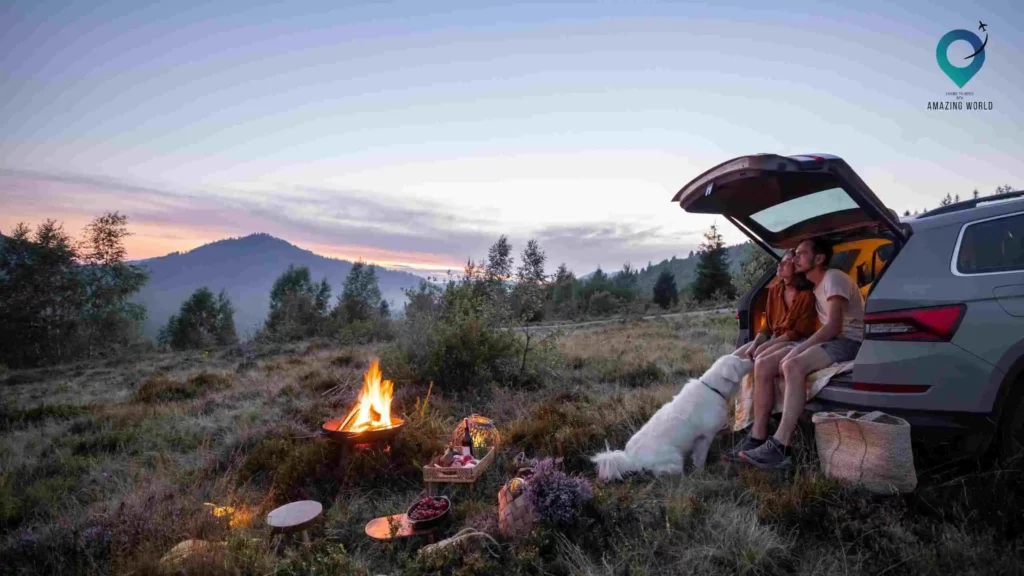
Car camping strikes a balance between the ruggedness of backpacking and the convenience of RV camping. Campers use their vehicles to transport gear and set up camp:
- Essential Gear: Car campers can carry larger and more comfortable gear, including spacious tents, thicker sleeping pads, and portable chairs.
- Access to Comforts: Since you’re near your vehicle, you can store and access more supplies. This includes cooler boxes for fresh food and beverages.
- Campsites: Car campers can choose from a range of campsites, from established campgrounds with amenities to remote spots accessible by car.
5. Beach Camping
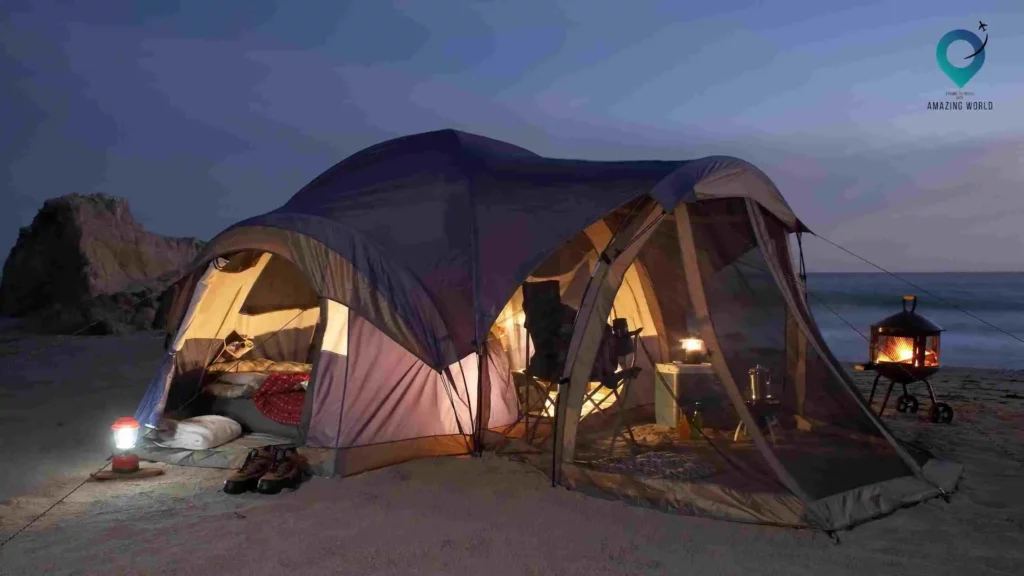
Camping by the beach adds a unique dimension to the camping experience, blending the tranquility of nature with the soothing sounds of waves:
- Coastal Ambiance: The rhythmic sound of waves crashing on the shore creates a serene backdrop for beach camping. Sunset views over the water and the gentle ocean breeze enhance the atmosphere.
- Bonfires and Activities: Many beach campsites allow campfires, providing opportunities for cozy gatherings and marshmallow roasting. Water activities like swimming, snorkeling, and beach volleyball offer additional fun.
- Challenges and Considerations: Sand management and tides can present challenges. Campers must consider the tide schedule and secure their tents against windblown sand.
6. Mountain Camping
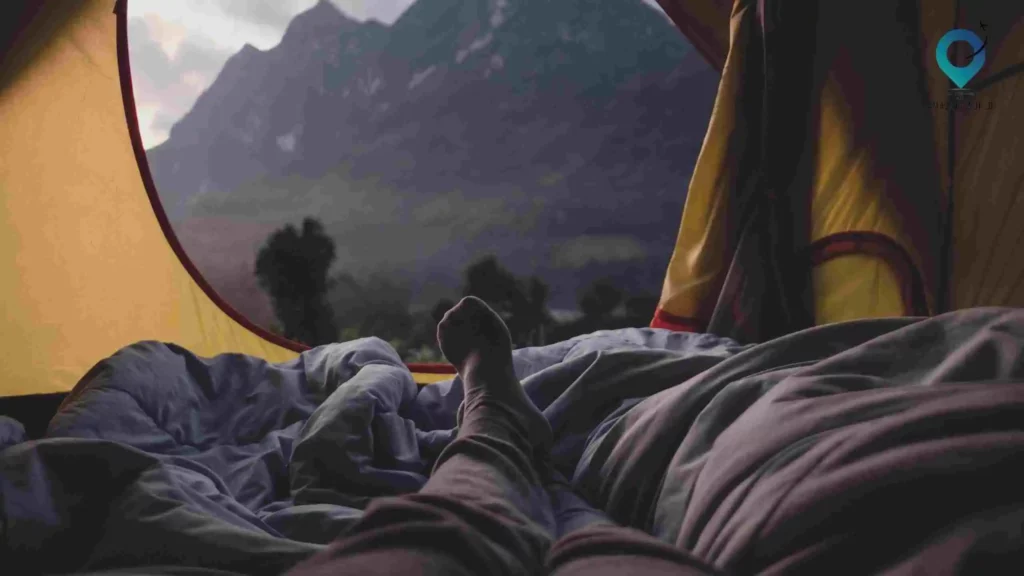
Camping in the mountains offers breathtaking views and a sense of isolation in pristine alpine landscapes:
- Scenic Beauty: The panoramic views from mountain campsites are unparalleled. Waking up to sunrise over rugged peaks or stargazing at night amidst clear skies is truly awe-inspiring.
- Altitude Considerations: Mountain camping often means dealing with higher altitudes. Campers need to acclimatize to prevent altitude sickness and be prepared for rapidly changing weather conditions.
- Wildlife and Flora: Mountain environments can host unique wildlife and plant species. Campers might encounter mountain goats, marmots, or even elusive snow leopards in some regions.
7. Desert Camping

Camping in the desert offers a stark yet captivating environment that showcases the raw beauty of arid landscapes:
- Harsh Terrain: Deserts are known for extreme temperature variations, with scorching heat during the day and chilly nights. Campers must be equipped with appropriate clothing and gear to handle these shifts.
- Stargazing Paradise: With minimal light pollution, desert camping provides unparalleled stargazing opportunities. The clear night skies offer a canvas of stars and celestial wonders.
- Water Conservation: Desert campers need to practice responsible water usage and carry enough water for hydration, cooking, and cleaning. Knowledge of water sources and treatment methods is crucial.
8. Canoe/Kayak Camping
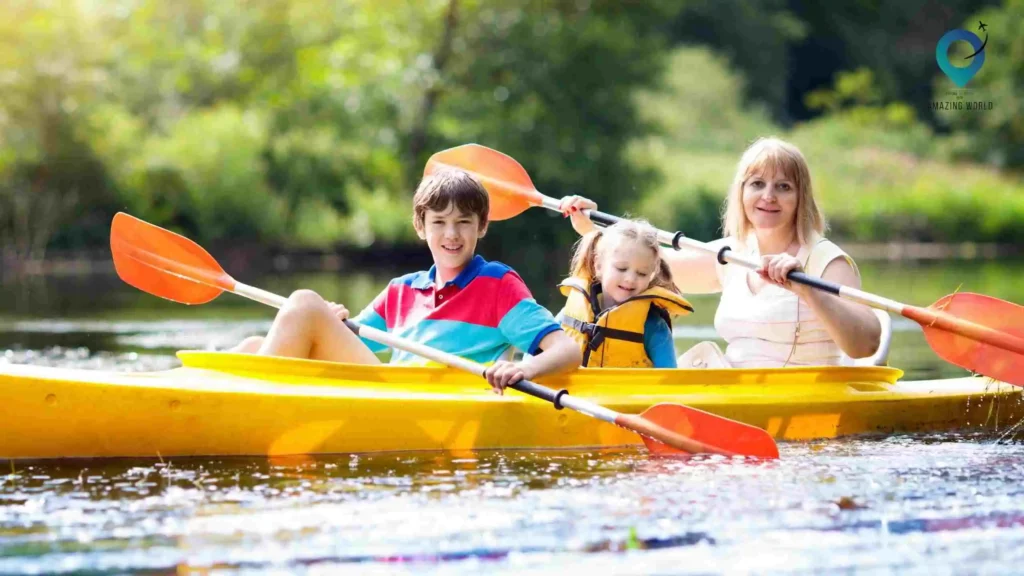
Exploring water bodies while camping in a canoe or kayak offers a serene and immersive experience:
- Watery Wilderness: Paddling along rivers, lakes, or even coastal waters allows campers to access remote and tranquil locations that are often inaccessible by foot.
- Watercraft Essentials: Campers must learn basic paddling skills and be equipped with waterproof containers for gear. Safety measures such as wearing life jackets are paramount.
- Campsites by the Water: Setting up camp on the shores of a peaceful lake or next to a flowing river adds an enchanting touch to the camping experience.
9. Yurt Camping

Yurts, traditional circular tents with a rich history, offer a unique and comfortable camping experience. Here’s what you need to know about yurt camping:
- Cultural Appeal: Yurts have cultural significance in various regions, such as Central Asia. Modern yurt camping embraces this heritage while adding modern comforts.
- Cozy Interiors: Yurts often feature comfortable bedding, heating options, and a spacious layout, providing a cozy retreat in various weather conditions.
- Natural Surroundings: Yurt campsites are usually nestled in scenic locations, allowing campers to enjoy both the structure’s charm and the beauty of nature.
10. Hammock Camping
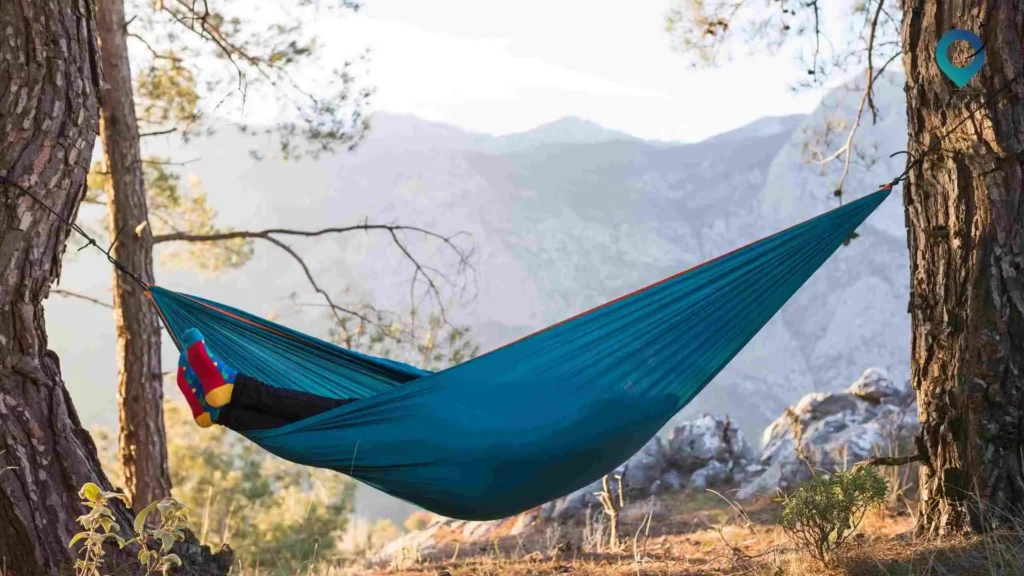
Hammock camping provides a lightweight and minimalist way to enjoy the outdoors. Here’s what you need to know about this unique camping style:
- Elevated Comfort: Hammocks provide a suspended sleeping arrangement that offers a different perspective and can be incredibly comfortable.
- Minimalist Gear: Hammock campers often carry lightweight hammocks, rainflies, and insulation instead of traditional tents and sleeping bags.
- Versatile Locations: Hammock camping is versatile and works well in forests, beaches, and even urban environments where traditional tents might not be suitable.
11. Cave Camping
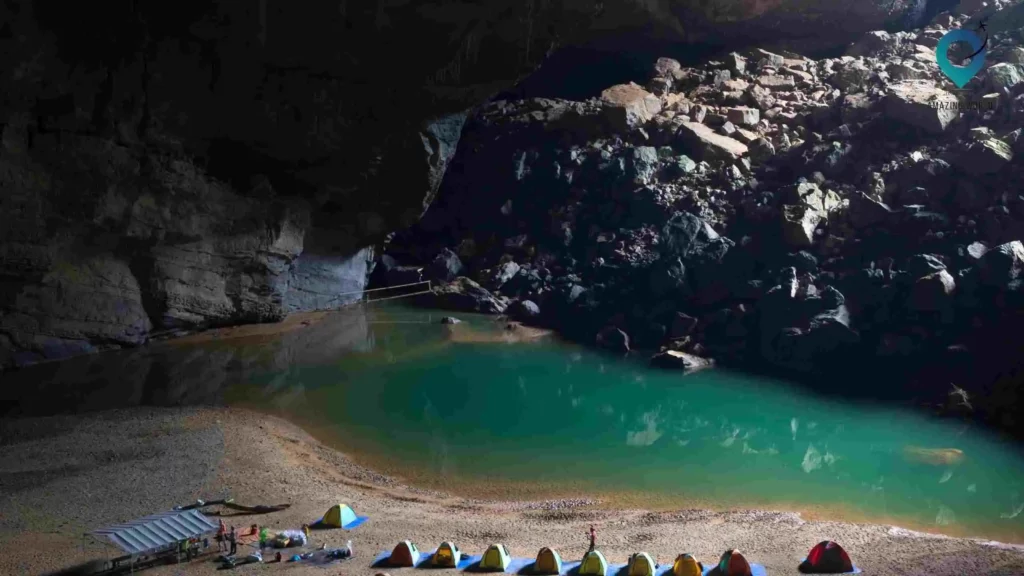
Cave camping offers an adventurous twist, allowing campers to spend nights in subterranean realms. Here’s a closer look at this unique experience:
- Underground Exploration: Cave campers explore and sleep in caverns, experiencing the unusual beauty of rock formations and underground environments.
- Guided Tours: Many cave camping experiences are guided to ensure safety and minimize environmental impact.
- Special Considerations: Cave camping requires proper gear, knowledge of cave systems, and respect for fragile environments to preserve these unique places.
12. Bicycle Touring Camping
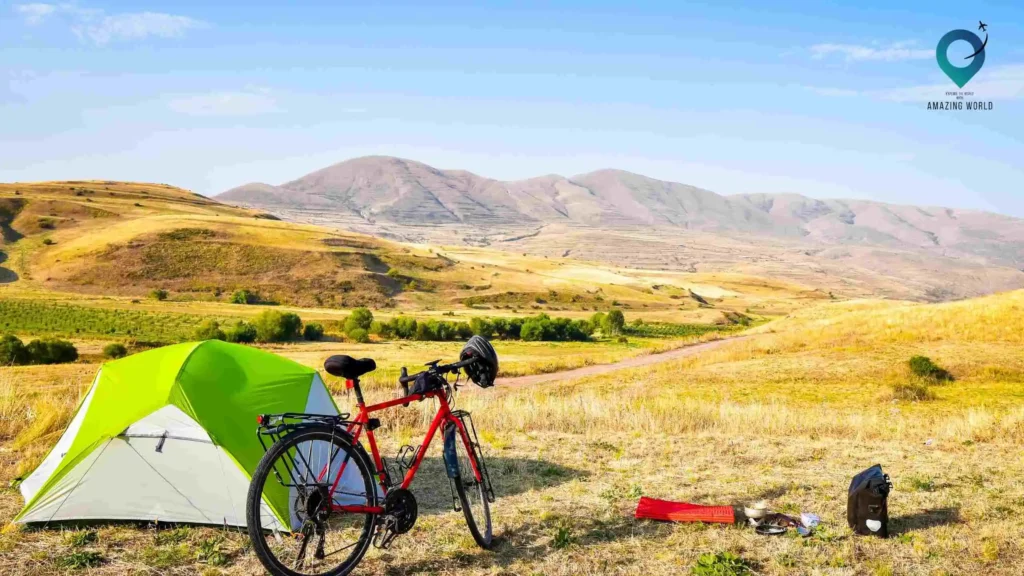
Combining camping with long-distance cycling, bicycle touring camping offers an adventurous way to explore the world. Here’s what you should know:
- Two-Wheeled Exploration: Bicycle tourers travel long distances, camping along the way, which allows for immersive interactions with landscapes and communities.
- Pack Light: Campers must prioritize lightweight gear due to the limited carrying capacity on bicycles.
- Route Planning: Planning routes that include suitable campsites, facilities, and scenic spots is essential for a successful bicycle touring camping adventure.
13. Cultural Immersion Camping

Cultural immersion camping focuses on connecting with local cultures and communities during outdoor adventures. Here’s what to consider for this enriching experience:
- Meaningful Exchanges: Cultural immersion camping allows campers to learn about local traditions, cuisines, and lifestyles directly from communities.
- Responsible Travel: Campers must respect local customs, minimize environmental impact, and support local economies.
- Community Initiatives: Some campsites are hosted by indigenous communities or local cooperatives, providing an authentic and educational experience.
14. Solo Camping
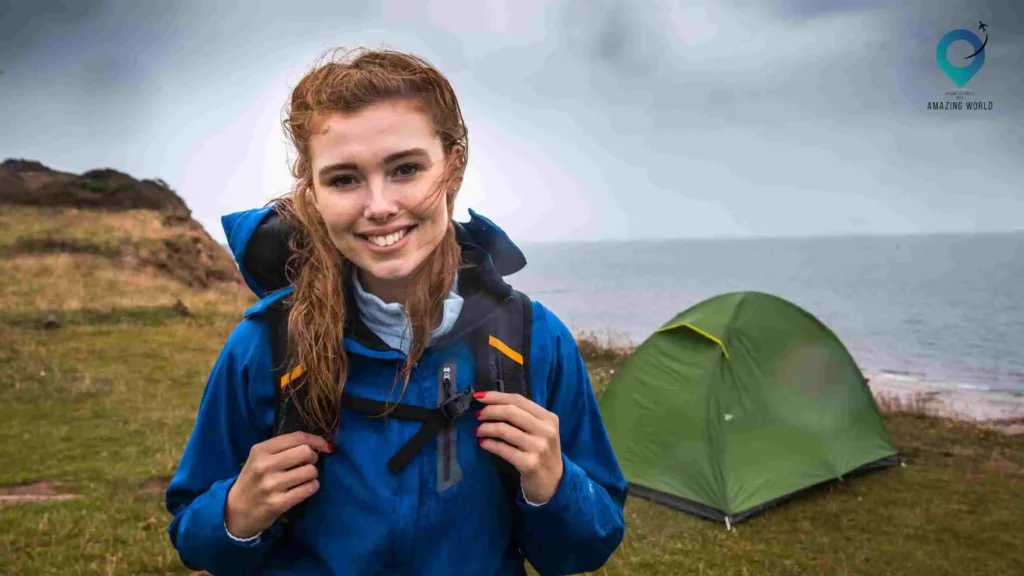
Solo camping offers introspection, self-reliance, and a deep connection with nature. Here’s what to know about embarking on a solo camping adventure:
- Personal Journey: Solo camping provides a chance to disconnect from the noise of everyday life and spend quality time alone.
- Safety First: Solo campers must prioritize safety by informing others about their plans, carrying essential safety gear, and choosing well-traveled areas.
- Mindful Experience: The solitude of solo camping encourages mindfulness and reflection, making it a valuable experience for personal growth.
15. Group/Family Camping
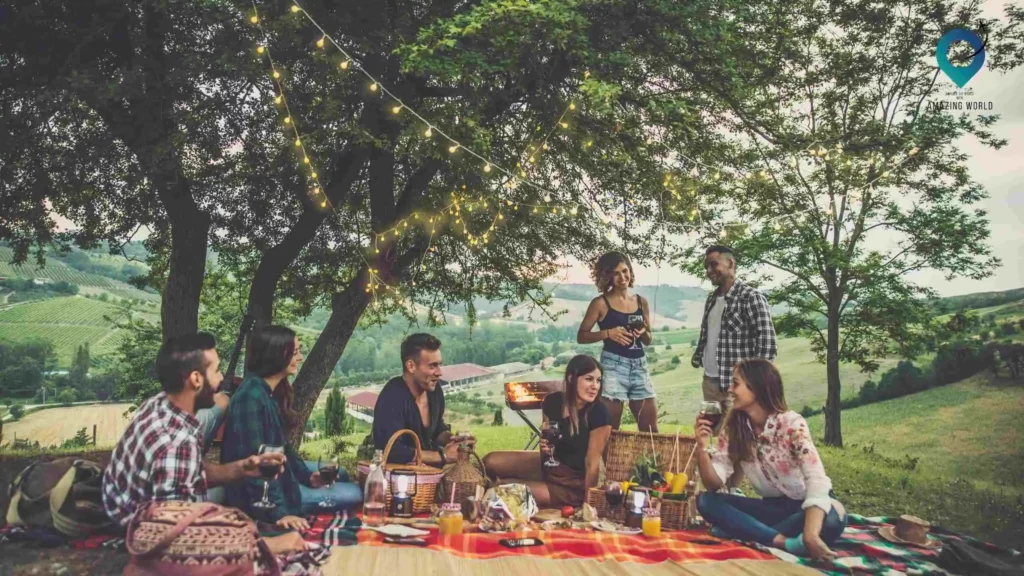
Camping with friends or family creates bonds and shared memories in the great outdoors. Here’s what to expect from group and family camping:
- Shared Experiences: Group and family camping offers opportunities for shared activities like group cooking, campfire stories, and games.
- Logistical Planning: Larger groups require more comprehensive planning for food, accommodation, and activities.
- All-Ages Enjoyment: Group and family camping allow people of different ages to experience nature together, fostering a love for the outdoors in younger generations.
Conclusion
From the rugged trails of backpacking to the opulent haven of glamping, the world of camping is a diverse tapestry woven with threads of adventure, nature, and connection. As we bid farewell to our exploration of the captivating types of camping adventures, we find ourselves standing at the crossroads of tranquility and excitement, where each path leads to a different facet of the great outdoors.
Whether you yearn for the simplicity of tent camping, the mobility of RV journeys, or the immersion of cultural experiences, camping offers a doorway to the untamed beauty of our planet. It’s a chance to escape the hustle and bustle, to trade concrete for starlit skies, and to find solace in the soothing symphony of rustling leaves and babbling streams.
As you embark on your next camping venture, remember that the essence of camping lies not only in the type of adventure you choose, but in the moments shared with friends, the solitude embraced, and the stories told around crackling campfires. So, whether you’re a seasoned outdoor enthusiast or a curious soul dipping your toes into the world of camping, may your journeys be filled with wonder, discovery, and the simple joys that nature graciously offers.
As the sun sets on this article, may it rise again on your next camping adventure, carrying with it the echoes of laughter, the aroma of campfire-cooked meals, and the memories that will forever define your connection with the great outdoors.
How much did you like Our detailed Types of Camping Adventures: From Backpacking to Luxurious Glamping? Review Also, please share these Blogs with your friends on social media.
Related Article –
Camping Adventures: Most Asked Questions (FAQ’s)
What is camping, and why do people do it?
Camping is an outdoor recreational activity where individuals or groups set up temporary shelters, such as tents or RVs, in natural settings. People camp to reconnect with nature, unwind from city life, engage in outdoor activities, and create lasting memories with friends and family.
What are the different types of camping adventures?
There are various types of camping adventures, including backpacking, tent camping, RV camping, car camping, beach camping, mountain camping, desert camping, canoe/kayak camping, winter camping, survivalist camping, glamping, treehouse camping, yurt camping, hammock camping, cave camping, bicycle touring camping, cultural immersion camping, solo camping, and group/family camping.
What is backpacking camping?
Backpacking camping involves carrying essential gear in a backpack and hiking to remote areas. It’s a way to explore challenging terrains and experience self-sufficiency in the wilderness.
What is glamping?
Glamping, short for “glamorous camping,” offers luxurious accommodations in natural settings. It combines the comforts of upscale hotels with the beauty of outdoor environments.
What’s the difference between RV camping and tent camping?
RV camping involves using recreational vehicles, such as motorhomes or camper trailers, as mobile accommodations. Tent camping entails setting up tents for shelter.
How do you choose the right campsite?
Consider factors like accessibility, amenities, environment, and activities. Research local regulations and facilities to make an informed choice.
What should I pack for camping?
Packing essentials include shelter (tent or RV), sleeping gear, clothing appropriate for the weather, cooking equipment, food, water, and personal items. The specific items depend on the type of camping and location.
Is camping safe?
Camping is generally safe, but it’s important to follow safety guidelines, be prepared for emergencies, and respect wildlife and local regulations. Proper planning and awareness contribute to a safe camping experience.
Can I go camping if I’m not experienced?
Yes, many camping styles are accessible to beginners. Start with car camping or choose campgrounds with amenities. As you gain confidence, you can explore more challenging adventures like backpacking.
What’s the best time of year for camping?
The ideal time depends on the camping type and location. Spring and fall are popular for moderate temperatures, while summer is great for beach and water-based camping. Winter camping requires extra preparation.
Can I camp with kids?
Absolutely! Camping can be a memorable experience for children. Choose family-friendly campgrounds, plan age-appropriate activities, and prioritize safety and comfort.
How do I find camping sites?
Online platforms, camping apps, and national park websites provide information about camping sites, facilities, and reservations. Research in advance to find the best options for your chosen adventure.

Meet David Hoper, a passionate travel Blog writer with 7+ years of experience in travel content. Through his exemplary storytelling and engaging narratives, he shares his experiences and brings destinations to life. With a keen eye for detail and a love for exploration, he has cultivated a diverse portfolio of travel blogs that inspire and inform readers worldwide.




